#rug hooking
Note
I love your rug hooking! Are you ok with people copying your patterns for personal use?
thank you so much! honestly so far almost all the rug hooking things I've posted have been gifts or commissions so I'd rather not people copy them, but I appreciate you asking! :0
#minus the snail one#snail rug hook peeps can copy for personal use/have my blessings hjsfgkf#rug hooking#saturday asks#asks#my asks tag is forever stuck to saturday asks even if it's not saturday mhgfjj#edit: -squints- was thinking about it but ....also if someone happened to copy it for personal use but never asked me#and/or didn't tell me about it I mean I wouldn't ever know would I#-inserts eyes emoji-#muffled laugh
30 notes
·
View notes
Text


Details of rug hooked dog (life-sized medium dog)

Her legs are mottled pink and purplish gray
490 notes
·
View notes
Text








Canadian hooked rugs
79 notes
·
View notes
Text

"Fisherman's Dream" by George S Burtenshaw: Fisherman's Dream Tapestry - Textile by George S Burtenshaw - Pixels
20 notes
·
View notes
Text
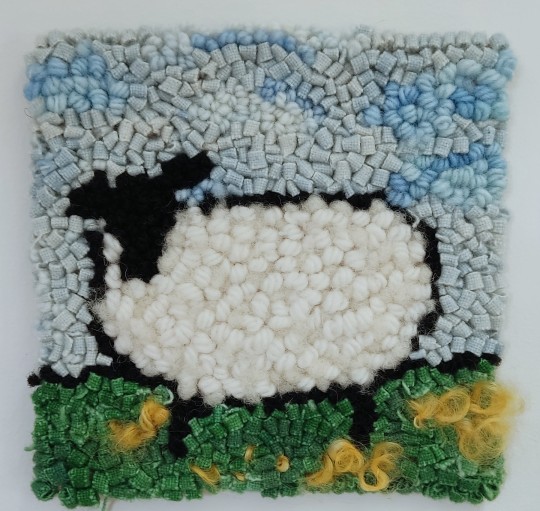
Lost Sheep (designed by Deanna Fitzpatrick)
31 notes
·
View notes
Text
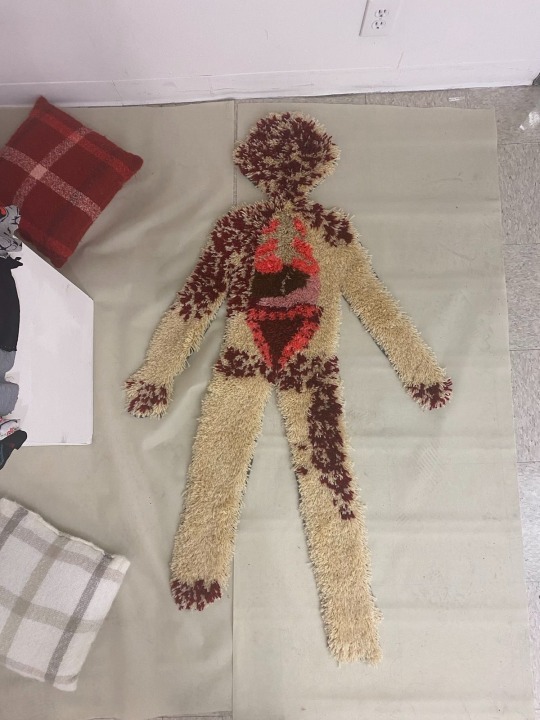

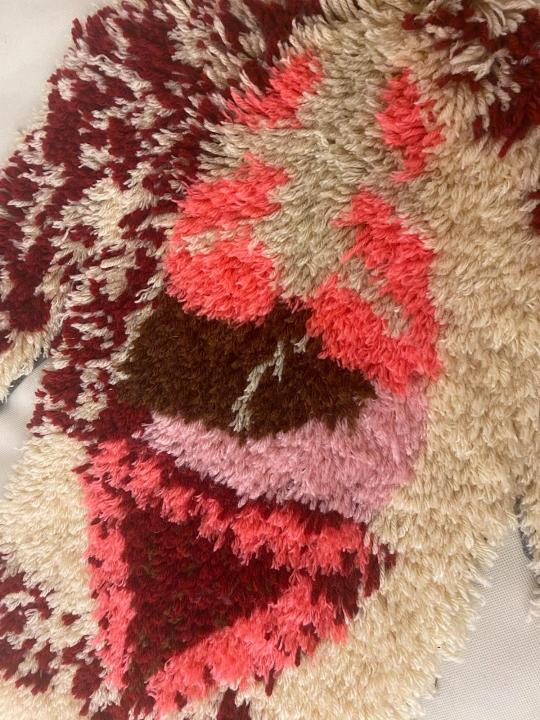

"its purpose now was to be loved", yarn on rug canvas, approx. 57.5 x 34in
id under cut
[Image 1: A large latch hook rug in a humanoid shape. It is covered in red circular blemishes representing wounds. The center is depicted as being open, exposing the internal organs. The skin is made with a pale skin tone colored yarn. The lungs and the large intestine are made with a bright pink yarn. The bones are made with a slightly duller light tan color. The liver is made with brown yarn. The stomach is made with light pink yarn.]
[Image 2: A detail shot of the latch hook rug. It is a close up on the head, showing where the face would be. Instead of a face there are a number of red spots representing wounds.]
[Image 3: A detail shot of the torso section of the rug. The internal organs are on display including the lungs, the rib cage, the stomach, the liver, the small and large intestines. Around the left side of the opening are more of the red wounds.]
[Image 4: An even closer detail shot of the torso showing the texture of the yarn.]
#art#artists on tumblr#rug making#rug maker#latch hook#rug hooking#art installation#horror art#soft sculpture
109 notes
·
View notes
Text
Rug hooking experiment on window screen and burlap. 100% fluffy caloric intake guaranteed!
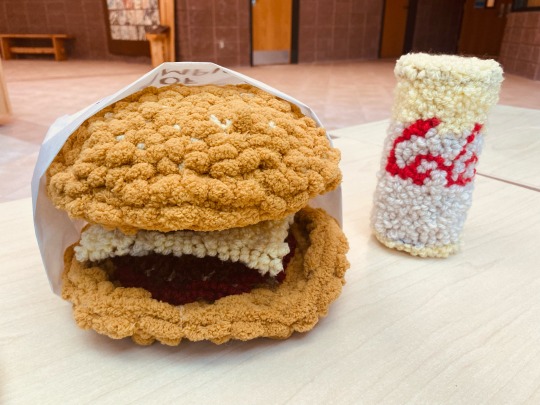
#artist#artists on tumblr#artwork#my art#rug hooking#textiles#rug hook#yarn#yarn art#burger#fast food#darkokrashart
17 notes
·
View notes
Text

New rug tapestry has begun
2 notes
·
View notes
Text

more wips
#wip#fabrication#rug hooking#fiber art#artists on tumblr#yarn's pretty uniform at least so far compared to bg#or like not a combo of a bunch of different yarns#plus I think it's sock weight? dk? so how the overall texture/actual loops look together is interesting#I guess for comparison the white yarn is bulky#like from a farther view they kinda blend together#also might take me longer than the other two since the yarn is thinner hshjfg
10K notes
·
View notes
Text
Hooking rugs that look like dogs
Here's how I do it:
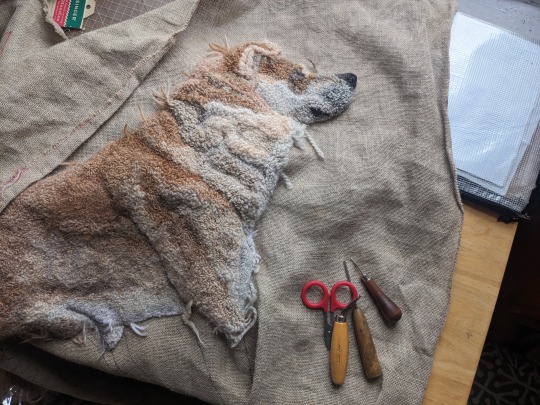
The process I use is called rug hooking (not latch hook or punch needle or tufting, though it is the forerunner of the latter two techniques). Rugs are hooked by pulling loops of fabric strips or yarn through the holes of a base fabric with a coarse open weave, like burlap, or linen, or rug warp. The loops are pulled through the fabric with a squat-handled hook whose business end is shaped like a crochet hook. There are no knots and the loops aren't sewed down in any way. The whole thing stays put just by the tension of all those loops packed together in the weave of the foundation fabric.
This isn't a true detailed tutorial but a walk-through of my particular process. The same information is on my web page, emilyoleary.com .
I hook with yarn, rather than with cut strips of wool fabric, which is what many rug hookers use. I can get a looser, more organic distribution of loops with yarn than I could with wool strips, which are hooked in neat lines.
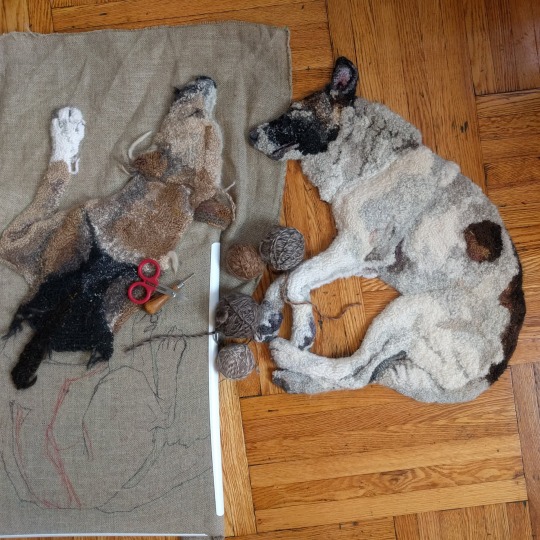
Mostly I use wool yarn. In terms of yarn weight, I can use DK, worsted, or Aran. If I'm using thicker yarn, I leave more holes un-hooked; if I'm using finer yarn, I hook more densely or double up lengths of it. I particularly like using single ply yarns (like Brown Sheep Lamb's Pride or Malabrigo Worsted). I don't keep count, but I think I usually use around two dozen types and colors of yarn per dog.
This is my yarn wall in my apartment. Mostly brown and gray yarn!

I start from a small drawing in my sketchbook, then I head to FedEx office to use a copy machine, blowing up the drawing repeatedly and experimenting with how big the dog rug should be.

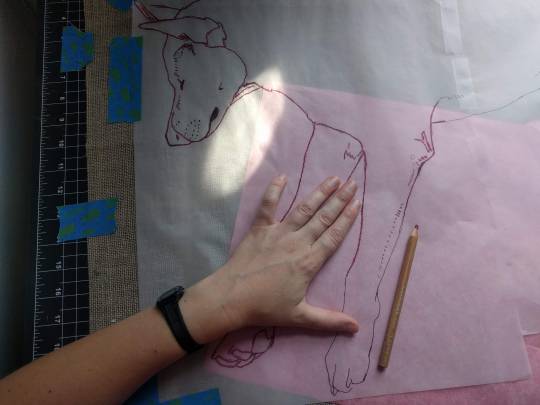
After transferring the image onto my linen, I immediately go over it with Sharpie, because the Saral is really difficult to see and really easy to rub off.

The rug is held taut by a PVC quilting frame that I set on my lap.
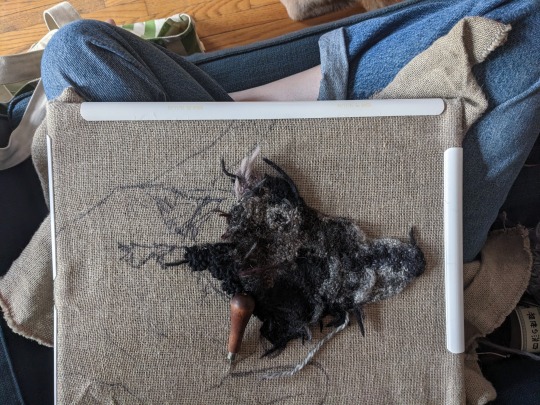
I push my hook down through the fabric with my right hand and my left hand stays below the fabric and guides the yarn while I pull it up and through with the hook. Not every hole in the fabric is hooked. Hooking every hole would make the rug too dense. I do hook pretty densely, though-- If you pick up one of my rugs you’ll see they have a slight curl to them, which is because they’re hooked pretty tight. I'm using all different weights and types of yarn, so it's a challenge to keep the overall tension even.
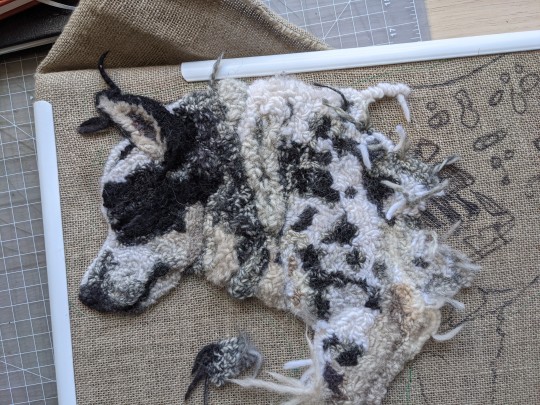
I hook my loops at varying heights to create a very low relief. Sometimes I trim the loops to make them fluffier or wispier or to shape a particular part. I look at a reference photo while I work and pull out and redo sections a lot.
My q-snap frame can accommodate the growing dog rug. I have extenders to make it bigger and I can clamp around my hooking.

The back of a rug looks like lines of little stitches. The lines are little worm trails snaking around because lines of hooking are not supposed to cross over each other. It's important to start a new length of yarn rather than cross over a stitch you already made! I read this when I first started and took it to heart. It makes it much easier to undo and redo hooking if you have to (and I redo sections A Lot). It also keeps the back from getting too bulky and resulting in uneven wear on the back of a functional rug that gets floor use.

When I’m done hooking everything I turn the rug over and brush watered-down Sobo glue on the edges of the dog, making sure to get one or two of the outermost lines of hooking. I do a couple coats of this thinned out glue. I'm careful not to use so much that it seeps to the front of the rug. When the glue is dry I cut the rug out, but I don't cut so close that the loops don't have any linen to keep them in.

It generally takes me at least several months to finish one dog rug. My hooking frame and yarn bag are very portable (though bulky) so I can hook out and about at coffee shops or the library or a brewery if there's enough space and light.
Hooking in the wild makes me an ambassador for making things in general and rug hooking in particular. I answer people's questions and always emphasize how relatively easy it is to get started hooking. Sometimes I get anxious that other people will hook rugs that look like mine but better, but I think that working in a traditional medium means you should share your knowledge for the good of the craft.

162 notes
·
View notes
Text

Aiming to finish this rug this week! It's my sister's cat :)
3 notes
·
View notes
Text

"Fishing for Compliments" by Sharon Fitzpatrick Perry: Fishing for Compliments Primitive Rug Hooking Kit With 8 Cut Wool Fabric Strips on Cotton Monks Cloth - Etsy
9 notes
·
View notes
Text

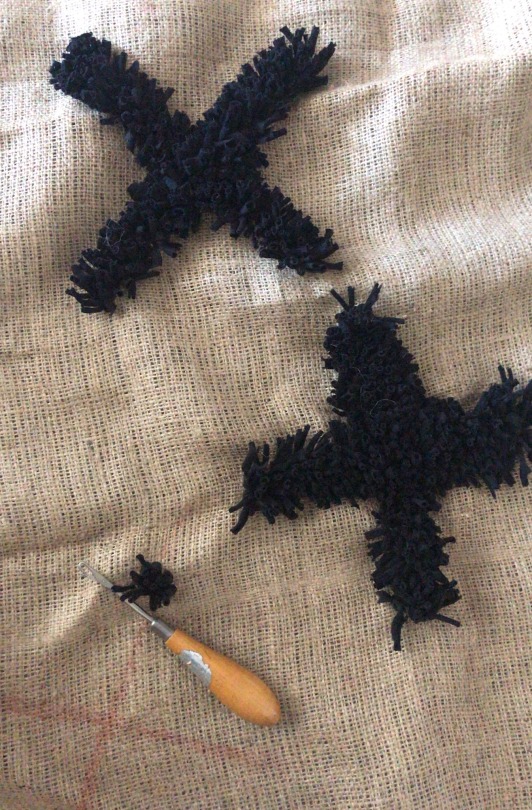
2019 latch hooking
Scrap fabric on hessian
This was a rug making attempt before I even know that a punch needle or tufting machine existed. This was about as far as I got with this piece as it takes so long (so long) so I gave up and then discovered other rug making methods and here we are.
I do however, love how the X’s came out so I thought I’d share them :)
#art#artists on tumblr#artist#my art#artists#abstract#homedecor#painting#rugart#tufted rug#latch hook#rug hooking#rug tufting#reclaimed materials#found materials#contemporary art#wall art#original art#traditional art#fibre crafts#fibre arts#textiles#fine art#artwork#etsysmallbusiness#etsyuk#uk artist#etsyseller#etsyfinds#artists on etsy
3 notes
·
View notes
Text
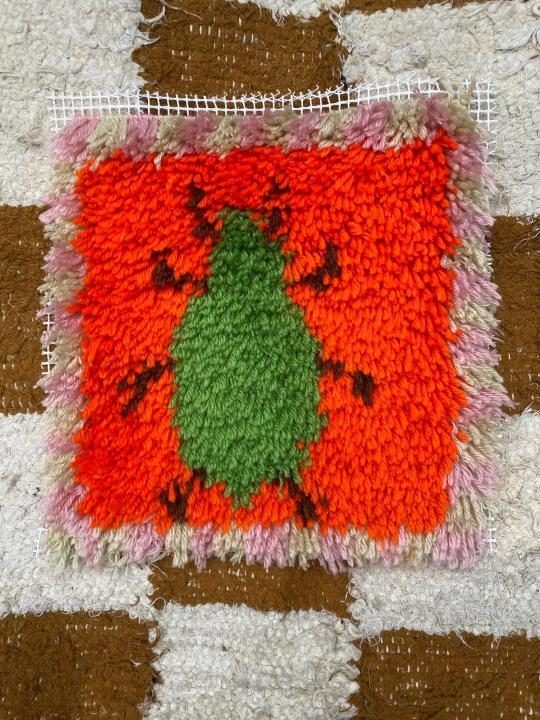
bug rug! this is a test for a potential larger project i'm developing...
36 notes
·
View notes
Text


grosbeaks been hanging out here, better slap one on the WineBuddy Holder
I picked up a shimmer ribbon for extra fancy!
#shadsart#rug hooking#bird#birds#dont be mean about twilights tail#its a mess and trying to untangle is#Daunting#ough
9 notes
·
View notes
